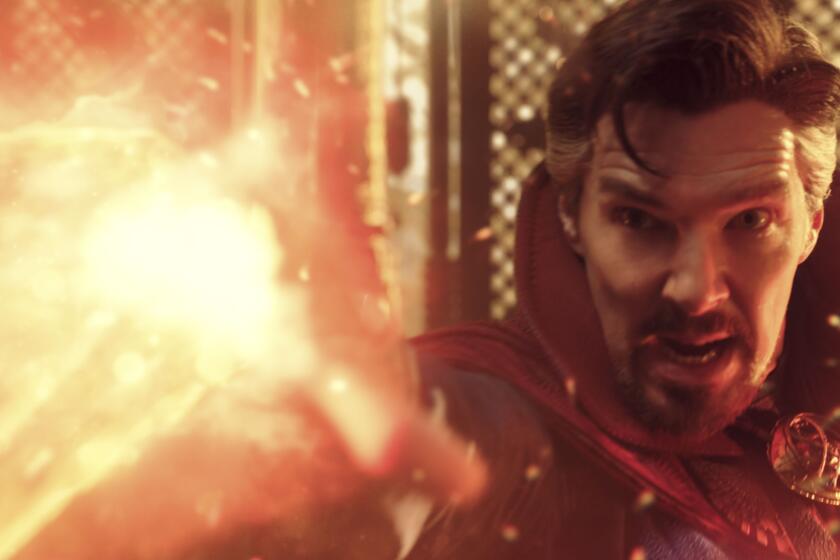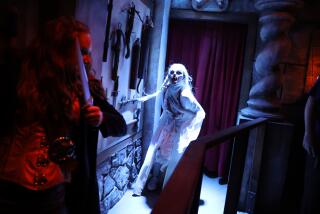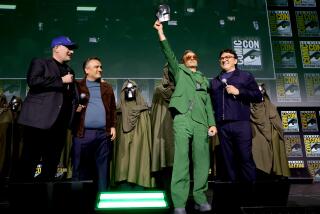âDoctor Strange in the Multiverse of Madnessâ crew on bringing the story to life
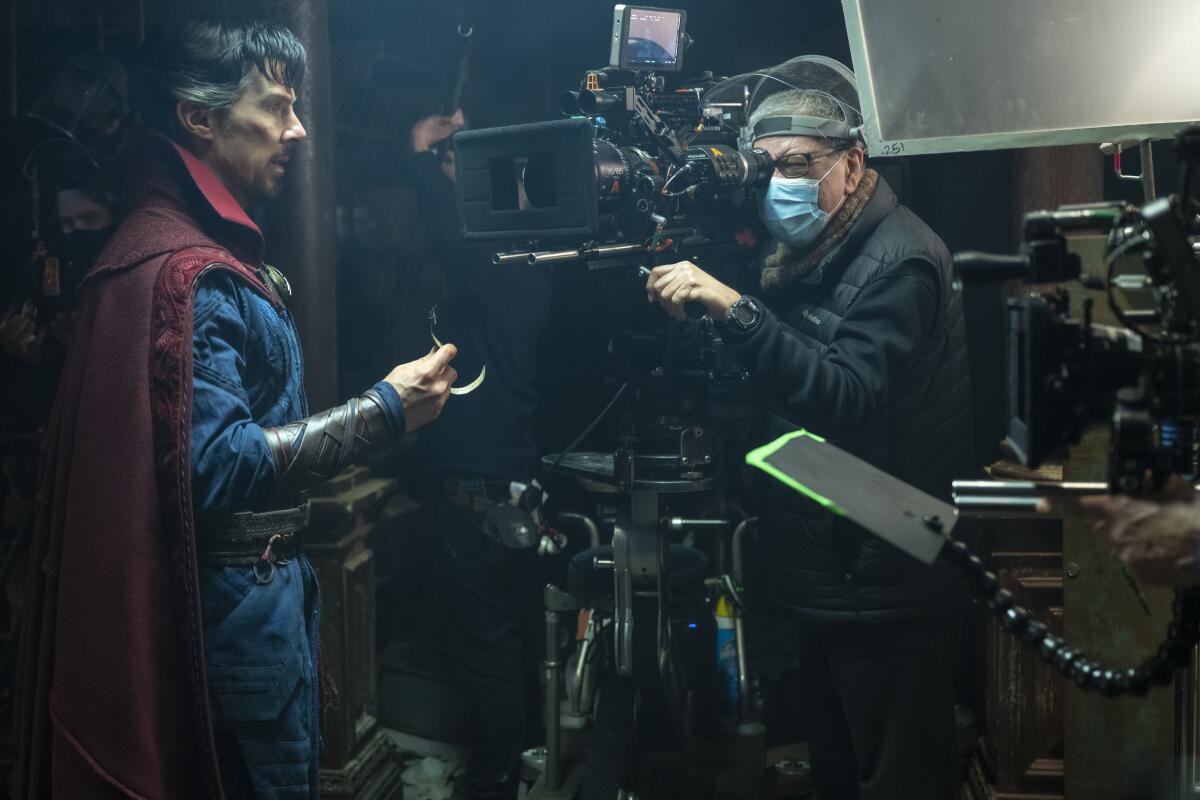
Nine years since his most recent film and 15 since his last in the superhero genre, Marvelâs âDoctor Strange in the Multiverse of Madnessâ marks director Sam Raimiâs reentry into moviemaking.
The filmmaker, who helped establish the genre with the original Tobey Maguire-led âSpider-Manâ trilogy in the early aughts, said returning to the format for Marvel Studios (which launched in 2008 with âIron Manâ) was drastically different than his time working on the Sony pictures between 2002 and 2007.
âItâs very exciting to see how Marvel has streamlined their operation,â he said. âItâs a wonderful place to work. There was nothing like that to help you as a filmmaker when productions were all one-offs, before there was a company that simply saw to the integrity of the characters.â
Raimi was tapped to direct after original âDoctor Strangeâ director Scott Derrickson stepped away from the sequel over reported âcreative differencesâ with the studio. After taking a meeting with Marvel brass and discussing the script for more than an hour, Raimi was in. The following day he met with screenwriter Michael Waldron, and the two decided to overhaul the script entirely, just days away from when shooting was scheduled to begin.
Waldron, creator and head writer of Season 1 of âLoki,â took on âMultiverse of Madnessâ shortly after completing the Disney+ series âso I was very plugged into everything MCU,â he said. âAs soon as I got brought on board, the first thing I did was read all of the âWandaVisionâ scripts because they were in the process of shooting that. And I went back and watched most of Samâs films to try to [determine his strengths], in the same way that, if youâre going to be writing for a particular actor, you want to write towards their strengths.â
Those strengths included being a âtremendous visual filmmakerâ as well as an âamazing leader,â Waldron says. âAbove all else heâs unflappable under immense pressure, and believe me, we were under immense pressure for a long time. With Sam as our leader, it always felt like an adventure, never like a slog. The exciting thing was seeing how motivated all of that was by character, by story. Everythingâs only in service of the characters, and that was really fun. I learned so much.â
âBecause this production had already been going in pre-production, it was a little bit of a moving train,â said Raimi. âWe had a start date already, a composer and cinematographer had been hired, and production teams were setting up in London. Offices had already been acquired. But Michael and I wanted to tell our own story, so he really ended up rewriting the entire script from scratch.â
âIt was our job to keep it simple,â said Waldron. âSam did a great job of always reminding me that the movie needed to be accessible even to people who maybe werenât super well-versed in the MCU or in the multiverse and all this sci-fi stuff. We tried to make a movie that could be followed by somebody who maybe just stumbled into the theater off the street. That was our goal.â
At the same time, juggling all the plot points and serving as a continuation of projects like âWandaVision,â âDoctor Strange,â âWhat If...?â and âSpider-Man: No Way Homeâ was âa lot,â Waldron says. âIt was a lot of weight for this movie to bear, and [simultaneously we had to] keep it focused on our central characters. You just want to find the heartbeats of your story,â he said. âFor us, it was Stephen Strange in his journey and Wanda in her story and letting those be your North Stars.â
For Strange, that was confronting his potential for evil and making the conscious choice to remain good. â[In the film], our Stephen has been encountering increasingly cautionary tales of himself in the multiverse,â said Waldron. âFirst the version that turned on America [Chavez] and tried to take her power. Then the truth of the Earth 838-Stephen that the Illuminati had to kill because he destroyed another universe. To meet a Strange who hadnât just made one bad decision or mistake but, rather, had consciously, willingly turned evil, was the final escalation for Stephen to really question whether or not he was actually as heroic as he believed.â
Conversely, for Wanda, it was about reckoning with the dark places that her grief could take her as evinced by her mental subjugation of the residents of Westview in âWandaVision.â
âAt the end of that story, sheâs given the Darkhold and learns that her children are out there in the multiverse,â said Waldron. âAnd so it felt like she was at a little bit of a crossroads at the end of âWandaVision.â And thatâs where we picked up our story. It felt like she had gotten most of the way to a place where she could be pushed by Stephen and others standing in the way of what she wanted to do some pretty villainous things. She started out a villain and then joined the Avengers but has always sort of ridden that line to some extent.â
âElizabeth came in with a very high understanding of both her character and the work that Michael had done on the script,â said Raimi. âAnd we had been part of many discussions about her character, working on the script and refining what it was that she felt she needed out of Wanda. We both had a very similar understanding of the way that it should be performed, but she always surprised me and put a lot more heart and soul and humanity in the core of everything she did than I was assuming was there. I was always surprised at the quality of her excellent acting skills.â
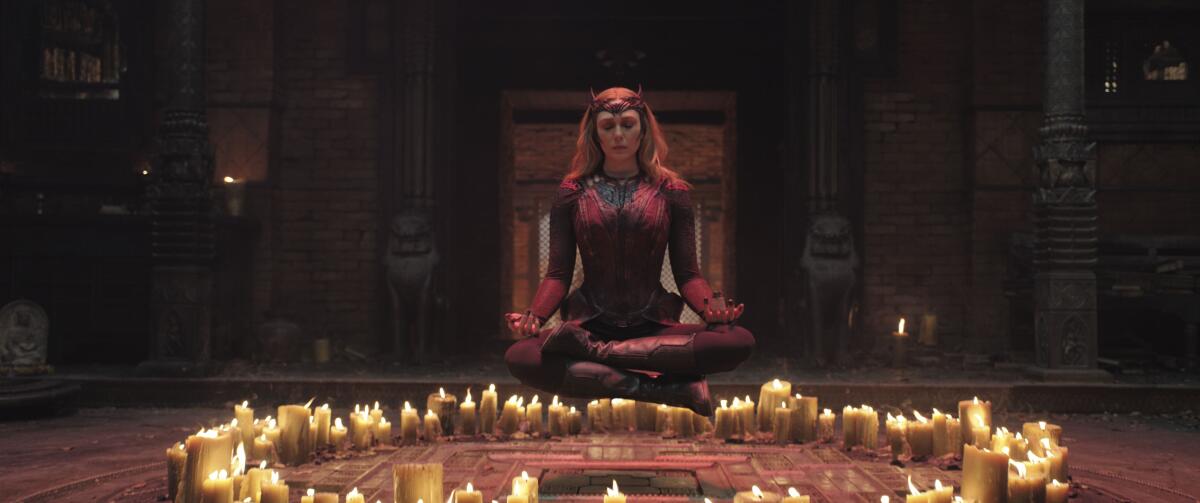
The film, the first MCU entry billed as a âhorrorâ despite maintaining a PG-13 rating, features Raimiâs signature brand of camp-inflected horror.
âWe were trying to have fun but not be too funny,â said the director. âSo it was a different kind of tone that I was going for; not really like those âEvil Deadâ movies, which are kind of goofy. But I do like over-the-top visuals, and I think the audience for this movie had a big appetite. I think they came in to see some fantastic things, and we all tried to rise to the occasion. I love working in the Marvel format. I think it was a good blend of what I do and what they do.â
In fact, Raimi was able to sail through production with his artistic vision mostly unchallenged.
âI think that the level of horror that Marvel had in their heads was about the exact same as Michael and I had in our heads as far as impact-wise, gore-wise, horror-wise,â he said. âWithout it being said, there was like a mutual understanding that there should be a lot of fun, spooky and even scary moments, but all under the bigger category of a fun adventure. And so there were only minor tweaks back and forth, but actually I canât even remember any.â
âI kept wondering when are they going to tell us [to dial it back], but no, we had all the freedom, it felt like, to make the biggest, craziest movie we could,â said Waldron.
Working on the film was a hugely collaborative process, Raimi says. For instance, one sequence early on in the film offers a glimpse at several different universes as Strange and America Chavez shoot through the multiverse while fleeing the Scarlet Witch. Those universes were imagined by Marvelâs art directors and concept artists, led by production designer Charles Wood.
â[In the script] I tried to give a basic foundation of what the universe was like, but this being my second MCU project, I knew to trust the production designers and art directors and all those brilliant folks [to execute their own vision],â said Waldron. âI didnât spend a ton of my time trying to build an entire sci-fi world on the page. I knew I could trust Sam and our collaborators to do that.â
The art departmentâs concept designs also informed the one-eyed tentacle monster that Strange and Chavez face off with in the beginning of the film.
âConcept artists and illustrators and [later] CGI artists, shaders and colorists all had a hand in determining the look of that thing,â said Raimi. âBut that job of creating the monster goes past them even to the effects editors, working on timings for the creatureâs movements. And people in the final grade are adding and changing aspects of it in some way or another. Simultaneously, the creatureâs roar is being designed by some great foley artist and recording artists [incorporating] things like Tasmanian devils and other creatures. Then the mixers [determine] how these sounds are combined for the creature when it shouts. And Danny Elfmanâs musical score is probably the last most important component of making that monster come to life.â
Later in the film is a scene where two Strange variants go head to head in a musical showdown. Storyboard artist Doug Lefler came up with the idea, collaborating with VFX supervisor Janek Sirrs and Elfman to bring the sequence to life. âTogether we went forward as a team and somehow met the deadlines,â said Raimi. âJust barely, though.â
In a full-circle moment, Raimiâs early aughts âSpider-Manâ films have recently been grandfathered into the MCU with Jon Wattsâ âSpider-Man: No Way Home,â which featured appearances from former live-action Spider-Men Maguire and Andrew Garfield alongside the MCUâs official web-slinger, Tom Holland. âI loved âNo Way Home,â â said Raimi. âI thought it was a complete audience thrill ride. The crowd I was with were ooh-ing and ahh-ing, and it had a great heart to it. It was great seeing my old friends again.â
When asked whether heâd be open to returning to the character now that franchise producer Amy Pascal announced that Holland may star in another three films about the web-slinger, Raimi demurred. âI love Spider-Man,â he said. âAnd I love Tom Holland in the role. [But] if I made a Spider-Man movie, it would probably have to be with Tobey or heâd break my neck.â
More to Read
Only good movies
Get the Indie Focus newsletter, Mark Olsen's weekly guide to the world of cinema.
You may occasionally receive promotional content from the Los Angeles Times.

